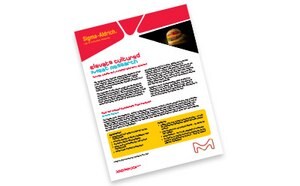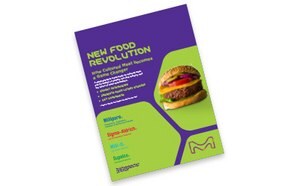Ensure Safety in Your
Alternative Proteins
Food Testing Solutions & Quality Components for
Alternative Proteins
*image of cultivated for salmon provided by customer Wildtype
Food Safety Solutions for Alternative Proteins
Discover solutions to ensure safe alternative proteins
Food scientists, food and beverage manufacturers, and consumers are advancing more sustainable ways to feed a growing population that focus on minimizing negative environmental impacts. A multi-solution approach is key, with lifestyle choices like meatless Mondays, flexitarianism, and veganism are paving the way for more sustainable eating habits.
As a science and technology company, backed by over 350 years of expertise in regulated industries, we are dedicated to support food scientists and manufacturers in their quest for innovative solutions. Our focus on alternative proteins, cultured meat and seafood, and sustainable food packaging ensures that you can play a critical role in protecting our planet while safely feeding its people.
Are you ready to learn more about our food safety solutions for alternative proteins? We invite you to reach out to us as your trusted partner in this journey. Together, we can develop cutting-edge solutions that not only enhance food safety but also contribute to a more sustainable future.
Unlocking the Future of Food: Alternative Protein Quality Testing
In the rapidly evolving landscape of alternative proteins, ensuring the quality and safety of novel foods is paramount. Our infographic on Alternative Protein Quality Testing highlights the key aspects of quality assurance in the alternative protein industry, showcasing the methodologies and standards that maintain the integrity of these innovative food products.
Why Quality Testing Matters?
As the demand for sustainable and ethical food sources increases, rigorous testing protocols become crucial. Quality testing is the foundation of consumer trust and regulatory compliance, addressing critical factors such as nutritional content, contamination levels, and overall product safety. This infographic illustrates how quality testing not only protects consumers but also fosters industry growth by ensuring that alternative protein products meet the highest safety standards.
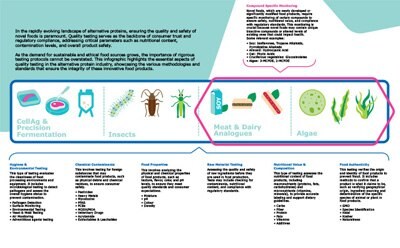
Alternative Protein Quality Testing Infographic
Cultured Meat Workflow Solutions & Services
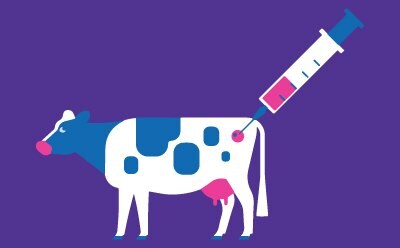

Scale Up & Manufacturing for Cultured Meat Production
Once the cell line is established, it undergoes a scale-up process to increase cell production. This involves optimizing the growth conditions and developing large-scale bioreactors for mass cell cultivation.

Analytical Testing
To ensure the quality of the cell culture, thorough quality control (QC) measures are implemented. These include chemical analysis to monitor nutrient levels.
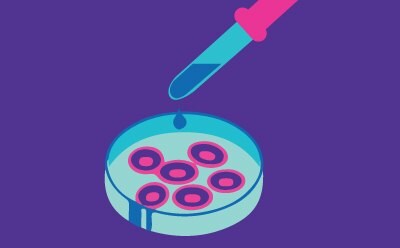
Microbiological Analysis & Product Testing

HACCP / Environmental / Hygiene
Strict control measures are put in place to ensure the safety and hygiene of the manufacturing process. This involves implementing Hazard Analysis and Critical Control Points (HACCP) protocols and maintaining a clean and controlled environment.

Safety & Regulatory Services
Safety and regulatory compliance play a vital role in cultivated meat production. Expert services are often engaged to navigate the complex regulatory landscape, ensuring that the final products meet all legal requirements and consumer safety standards.
- Food Safety Regulatory Compliance
- Food & Beverage QC Systems Qualification
- Food & Beverage Microbial Method Validation
- Validation Services
- Custom rec AB
Introduction of four key core team members for the cultured meat project at Merck, along with their roles and the attributes and skills they admire in their cultured meat colleagues.
Food Safety colleagues at Merck discuss the broader alternative protein industry, the similarities in challenges between different alternative protein industries like cultured meat, plant-based foods, and precision fermentation, and why collaboration and providing varied consumer choice are key.
Members of the alternative protein team at Merck discuss how our decades of experience in food safety for food manufacturers is available to all companies focused on safe and sustainable food in the alternative protein space.

Discover the conferences & events where our cultured meat experts will be participating – panel discussions, keynotes, sponsorships and more by following the hashtag #ConsiderMeCultured on LinkedIn – and join the conversation.
Get in touch with an expert to discuss our solutions for cultured meat testing and production:
Related Products
Alternative Protein Library
From well-characterized reagents to high-quality products, we're driving innovation in creating in vivo-like conditions for cell culture. Read the flyer to learn about the cell culture portfolio that supports meat production with ethical, sustainable, and delicious alternatives.
Get an insight into scale-up collaboration for Cultured Meat companies & Merck.
A comprehensive trend study on cultured meat and its impact on society, the food industry and the future of meat consumption.
Explore our flyer for key testing parameters, applications, and ingredient-specific compounds for alternative protein foods. Addressing challenges with plant-based meat substitutes and more.
A guide to Regulations, HACCP, Culture Media and Quality Control for Cultured Meat and Seafood.
Discover efficient workflows and reliable testing solutions designed to enhance quality control in all food industries.
To continue reading please sign in or create an account.
Don't Have An Account?